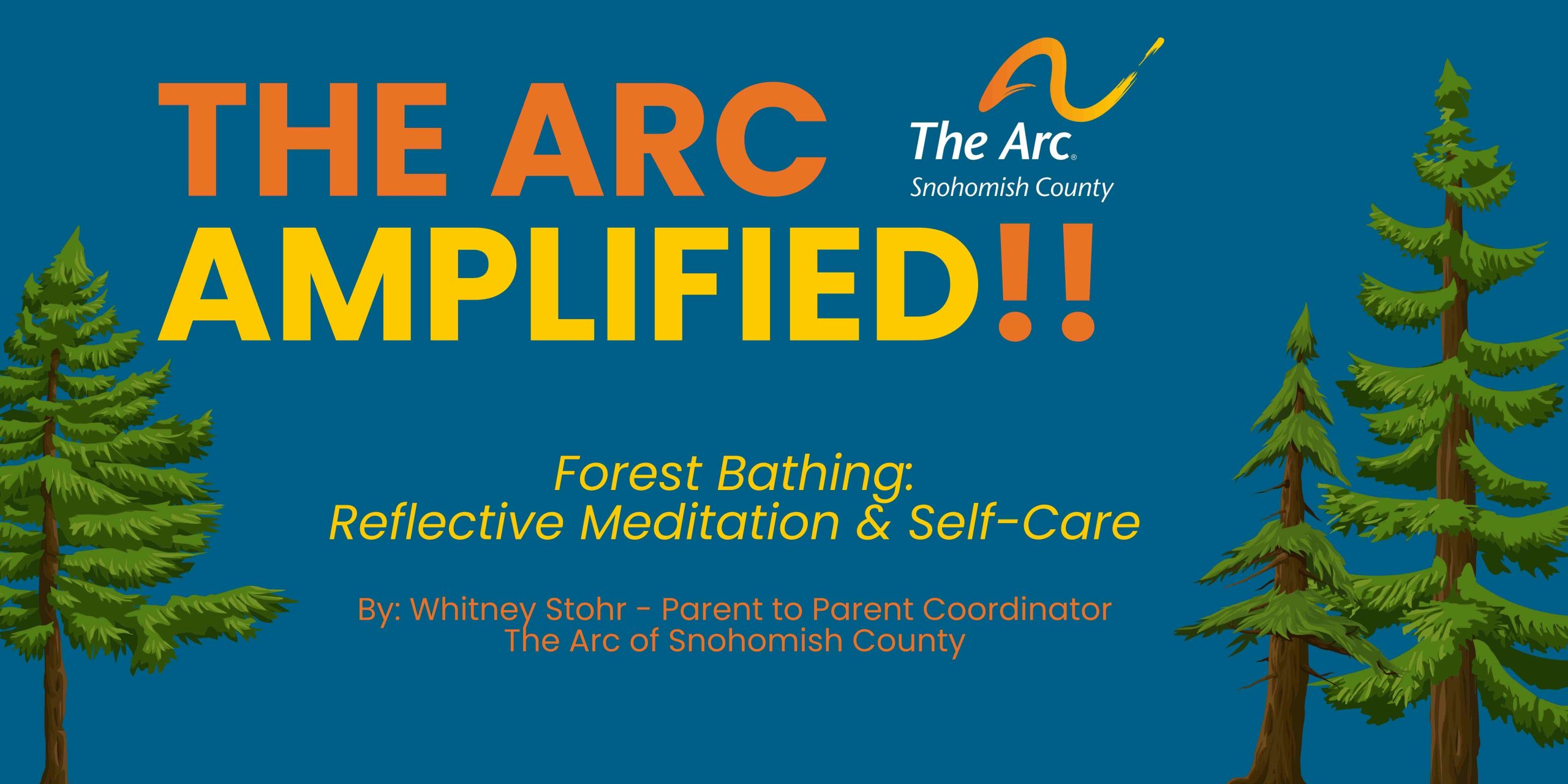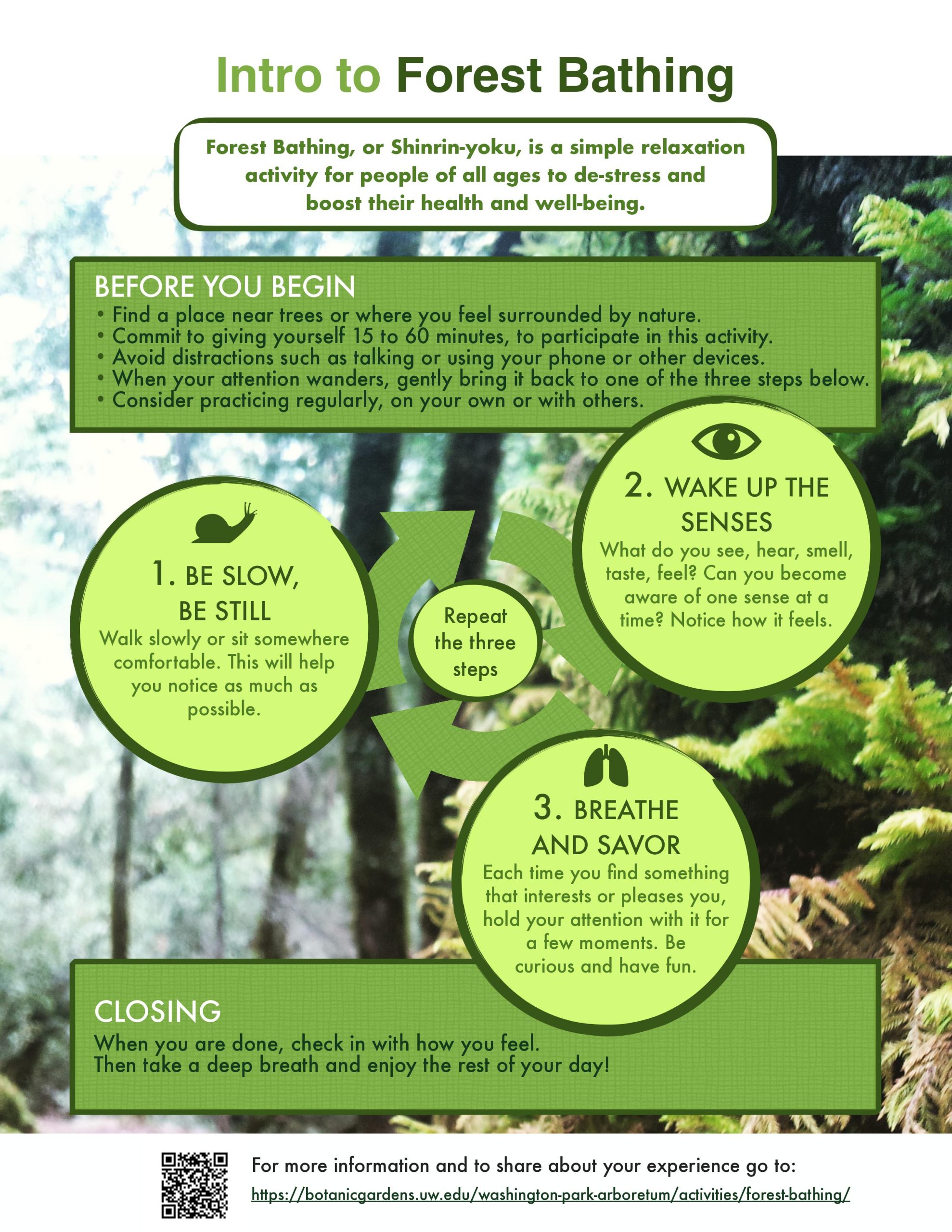
FOREST BATHING:
Reflective Meditation & Self-Care
Forest Bathing is a wellness activity that involves immersing oneself in nature while practicing intentional mindfulness.
Don’t worry! “Forest bathing” is probably NOT what you are envisioning at this moment. There is no bathtub and you will remain decently clothed throughout the practice.
The term forest bathing comes from the Japanese phrase shinrin-yoku: ‘shinrin’ translating to ‘forest,’ and ‘yoku’ to ‘bathing.’ Thus, this practice is about surrounding yourself, or “bathing” yourself, in the natural world.
The practice of forest bathing first came into popularity in Japan in the 1980s. The practice grew as a type of “eco-antidote” to an increasingly technology based world and economy. It encouraged people to reconnect with the natural world and protect the environment.
Simply being outdoors, enjoying and experiencing nature offers a multitude of benefits. However, forest bathing is about more than simply going outside. Forest bathing involves an additional meditative, or reflective, element. It is about practicing mindfulness with nature as a conduit. (Click here for an account of Forest Bathing by The Seattle Times.)
In the 1990s, researchers began studying the physical, mental and emotional benefits of forest bathing. As a self-care and mindfulness strategy, forest bathing encourages practitioners to relax their minds. It can reduce stress and mitigate burnout. It may support heart and lung health and increase focus, concentration and memory. It may also help boost immunity and support other areas of health and wellness. (Click here to read more about the benefits of Forest Bathing in this article by NPR.)
You can engage in forest bathing in any natural environment. It is easy and accessible and can be incorporated into your daily walk or when you are waiting for the kids between appointments or after school. Here is how you get started:
1. Find a space in nature and bring your focus to the present moment.
2. Begin walking, slowly and without purpose. Let your mind and body guide you as you focus your senses on the things around you that bring you peace. (You can also engage in forest bathing from a seated or stationary position.)
3. Take your time and spend as long as you need surrounded by nature in order to feel a sense of calm, renewal and happiness.
That’s it!
Want to learn more? The UW Washington Park Arboretum offers resources for Self-Guided Forest Bathing, including a 10-minute, guided audio meditation and a campus-based forest bathing map, with pinpointed locations on the UW Seattle, Bothell and Tacoma campuses.
Friends of North Creek Forest in Bothell hosts community Forest Bathing sessions on a monthly basis. (Click here for a video about Forest Bathing sessions at North Creek Forest.) Learn more at friendsnorthcreekforest.org.
Cascadia Forest Therapy is another local organization that offers support and resources for forest bathing, as well as guided public sessions. Learn more at cascadiaforesttherapy.com/public-sessions.

**********
An Invitation: Explore various self-care strategies and practices and engage in supportive discussion with other parents and family caregivers at monthly meetings of the Caregiver Connections support group, on the 3rd Tuesday of each month, from 7 PM to 8 PM, on Zoom. For more information, email whitney@arcsno.org.
**********
Whitney Stohr is a Parent to Parent Coordinator at The Arc of Snohomish County. She is passionate about advocating for medically complex children and children with disabilities and their families. She is a mom and medical caregiver herself, who is energized by working closely with other parent/family caregivers. She lives with her four-year-old son Malachi and husband Jason in Lynnwood. Connect with her on Instagram @rollin.w.spinabifida. Contact: whitney@arcsno.org.

